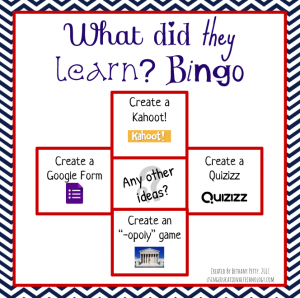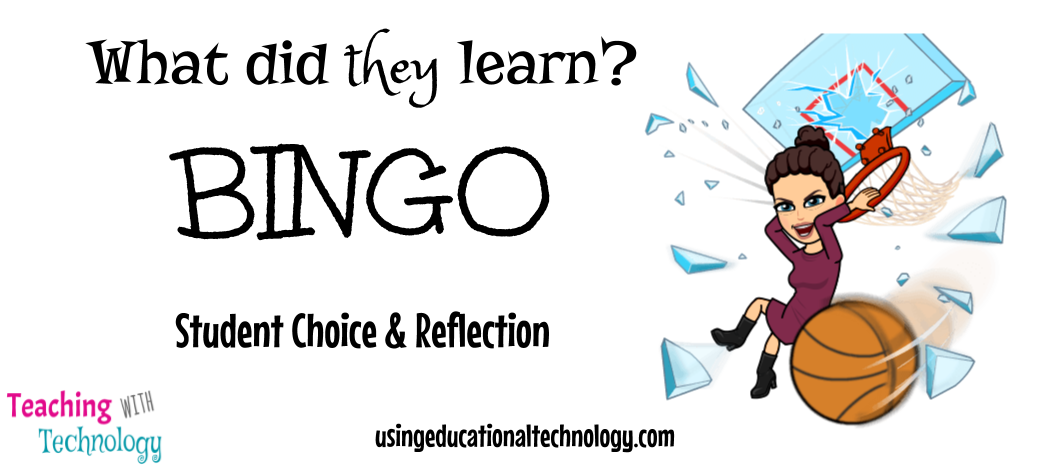As the semester draws to a close, my American Government classes are learning about protections guaranteed under the United States Constitution. In previous years, students have been able to work in groups to create a presentation about a landmark Supreme Court case in which they: identify the constitutional issue at the center of the case, describe what happened to cause the case, the outcome of the case, and why they think the case is important. All of this information is great and requires students to investigate great cases that have impacted our nation. However, I feel like this project doesn’t really encourage the students to create or analyze information … they’re basically locating facts and presenting them to their peers. They are also typically required to create a screencast of their presentation. One of my teacher goals for this year is to create more opportunities that promote student choice and reflection. Have I encouraged my students to reflect on what they’re learning? Have I given them any choice in how they’ll demonstrate what they’ve learned?
Not really.
We have so many fabulous technology tools at our disposal and, as I’ve said before here (and in my upcoming book!) … if I’m expecting my students to “level up” their work, so should I.
Students are still required to complete a presentation to share information about landmark cases they research. However, students are able to choose the cases they research and the medium through which they present that information. I’ve given options that include Prezi or Google Slides, but have left the door open for them to find other tools that they’d rather use.
The second part of this project requires students to create an activity that their peers will complete after viewing their presentation. Students can choose to create a Kahoot or Quizizz game, a Google Form, an “-opoly” game (using a template created from Constitution Land), or another activity that they would like to use.
I try to make a point to let my students know the “why” behind classroom activities. I asked each of my Government classes why they thought I would require them to create an activity for their peers to complete after viewing their presentation. Responses ranged from: “it’ll be fun to play a game,” to “the class can review to make sure they learned something.” I asked them to think about how creating this activity would benefit the people who actually presented the project. After a long silence in each class period, students came up with “it’ll make us think about the case more,” and “we’ll have to analyze the case,” and also, “we’ll learn because we’ll think about what we know about the cases.”
YES!
That’s exactly right. My goal is to encourage my students to engage in course content in a variety of ways to hopefully help create a concrete understanding of the information.

Leave a Reply